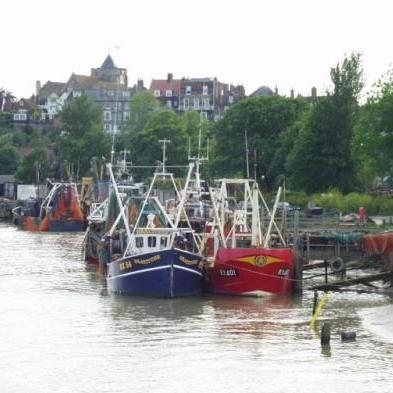Marine fishing has been a cornerstone of civilization for thousands of years, contributing to the growth of coastal communities and laying the foundation for numerous local and national economies. Despite generations of experience and millennia’s worth of technological advancement, fishing operations are still beholden to a number of environmental factors outside of their control. Wildlife population numbers can fluctuate across the globe and within a smaller coastal zone, limiting the opportunities that mariners have to net a large haul. Given the capricious nature of fishing expeditions, it’s important that ship captains have access to high-quality navigation and fish-finding tools to aid their voyages.
Along the California coast, for example, industry observers have expressed concern regarding the fallout from a recent drop in local sardine population numbers. According to the Los Angeles Times, the Pacific Decadal Oscillation – a recurring climate cycle which has decreased ocean temperatures along the West Coast – is thought to have created an inhospitable environment for sardines, driving many of them out of the region. A recent examination of the local population found that it has been reduced by 72 percent since 2006.
“The Pacific sardine is the ocean’s quintessential boom-bust fish,” the news outlet stated. “It is short-lived and prolific, and its numbers are wildly unpredictable, surging up and down in decades-long cycles in response to natural shifts in the ocean environment. When conditions are poor, sardine populations plunge. When seas are favorable, they flourish in massive schools.”
This uncertainty has made life difficult for many sardine fishing crews, as they waste time and resources trawling the coast for remaining fish. One fishing boat reportedly spent 12 hours and $1,000 worth of fuel on a recent voyage only to return without having netted a single fish. The drop in sardine population could affect other areas of the local fishing industry as well, as the fish serve as a main source of sustenance for other life forms.
Eliminate wasteful efforts with better equipment
Under such stressful fishing conditions, crew members should have every technological resource available to make the most of a given expedition and increase their chances of reeling in a big haul. Fish finding devices are critical in this regard, giving fishermen a glimpse into wildlife activity beneath the waves and reducing the amount of time spent trawling barren waters.
Keeping this equipment functioning optimally is vital to the success of a fishing operation, so mariners should be sure every internal component is of a high quality. One of the most important pieces within many marine navigation devices is the SD card. Having the capacity to quickly read and process data is essential when operating sensitive machines such as those used on fishing boats. NAND-based flash memory has emerged as the most reliable and expedient method of processing and storing information. By installing a high-quality SD card, fishermen can ensure that their fish finders and other navigational devices run consistently and accurately, increasing their likelihood of finding schools of fish.
When operating equipment is in such rugged and demanding conditions as those experienced on a fishing boat, only the most durable hardware will be able to survive the elements and continue running as needed. Panasonic’s line of industrial-strength SD cards features water, impact and temperature resistance capabilities, making them ideal for utilizing on the deck of a ship.
Extend benefits to other critical hardware
SD cards can also be used to power a number of other vital marine navigation tools including vessel transportation systems, GPS plotters and satellite compasses. According to Cactus Navigation & Communication, satellite compasses offer far more reliability than traditional navigational tools. Magnetic compasses can be unreliable when near metallic objects and almost completely lose their functionality in polar regions. Meanwhile, satellite compasses utilize GPS technology to identify a ship’s heading, making them more accurate guiding tools. Installing a high-performance SD card will ensure that these sensitive instruments continue to run effectively and keep a ship on course.
It can be challenging for prospective SD card adopters to wade through the multitude of options and hardware variants. In addition to single-level cell and multi-level cell versions, SD cards also feature a wide range of speed and storage ranges, as well as compatibility requirements. In order to get the most value out of these devices, users should go through a vendor that can clear up any confusion and help identify the most appropriate solution. DIGISTOR’s data storage experts are available to provide insight into the world of industrial-strength SD cards and assist individuals struggling to make the right decision. This way, users can be sure they are getting the most bang for their buck. As a reputable purveyor of Panasonic’s industrial SD cards, DIGISTOR has the know-how to examine a given customer’s needs and identify the best tool for the job, leading to greater operational performance.


Recent Comments